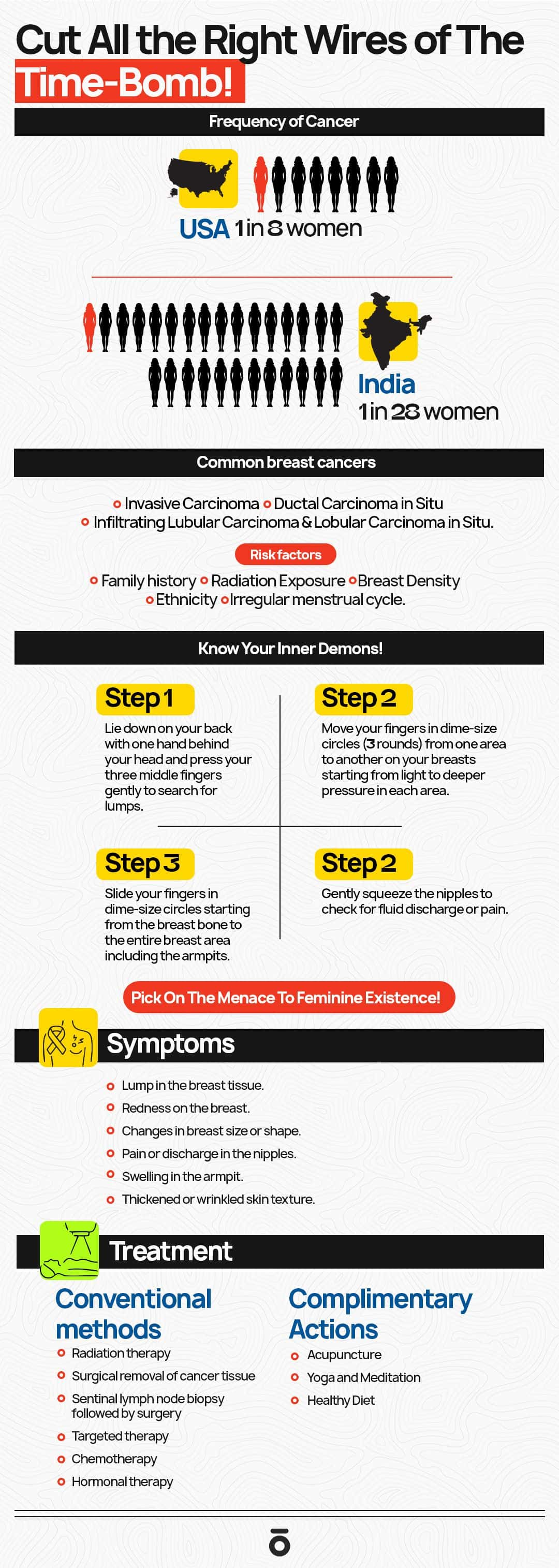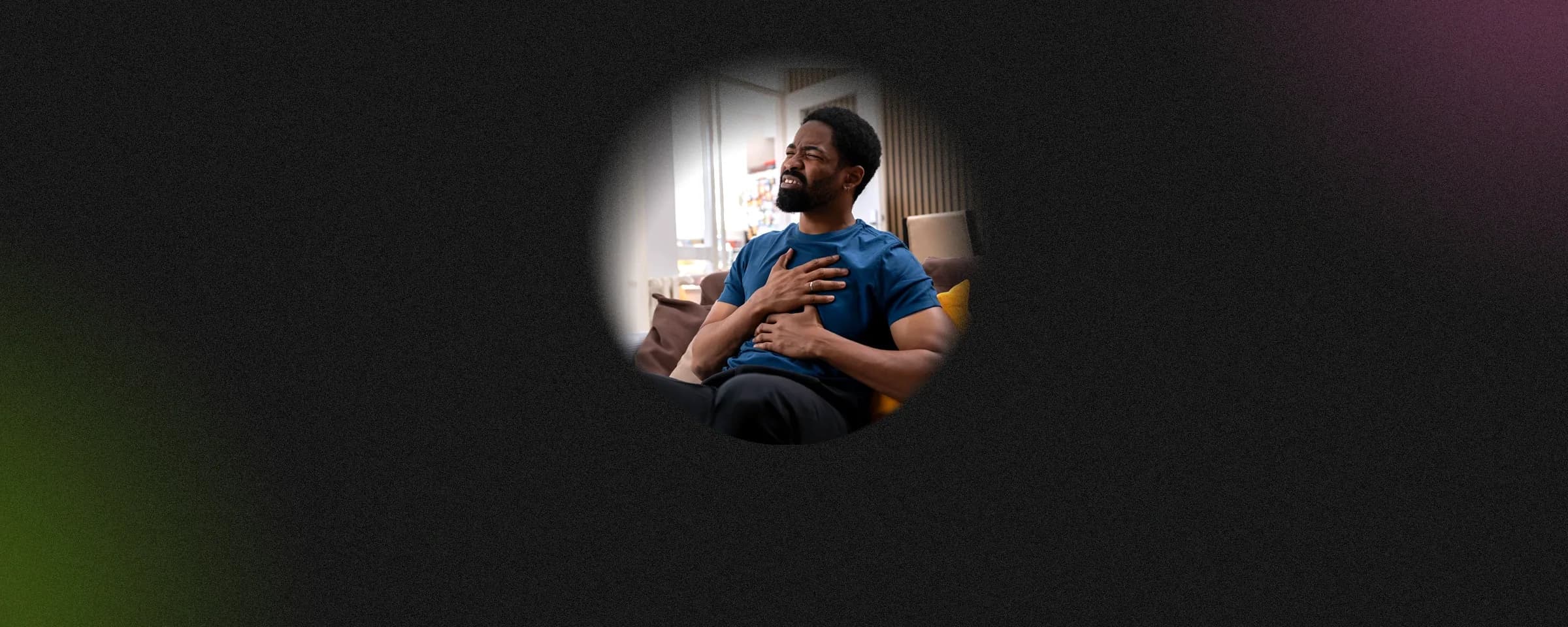Home
Blogs
Lifestyle Diseases
Aruna Irani's Regret: Her Cancer Returned After Skipping Chemo. Here's What Every Woman Must Know About Breast Cancer Stages
Aruna Irani's Regret: Her Cancer Returned After Skipping Chemo. Here's What Every Woman Must Know About Breast Cancer Stages


Introduction
Breast cancer is one of the most common and invasive cancers in women. Millions of women globally are diagnosed with breast cancer every year, and recently, veteran actress Aruna Irani revealed that she was one of them.
Irani was first diagnosed with breast cancer in 2015, which she decided to keep hidden from the public. The doctors had suggested chemotherapy, but she refused and opted for getting her lump removed instead.
This didn’t particularly bode well for her as her cancer resurfaced. When asked why she refused chemotherapy, Irani said, “I was a beautiful woman... I didn't want to lose my hair.” However, the story ended positively. When the cancer resurfaced, Irani underwent chemotherapy and is now cancer-free.
The actress’s story serves as a crucial life lesson, and this article will further help you understand the early stages of breast cancer, why chemotherapy is essential, and how women can make informed decisions based on medical science and let go of their fears.
What Does the "Stage of Breast Cancer" Actually Mean?
“Stage of breast cancer” is a classification system that helps doctors explain the characteristics of cancer, such as the size of the tumour and the extent to which it has spread.
Additionally, it helps determine whether the disease has metastasised and, if so, to what extent. This staging is the most significant aspect in terms of coming up with the most appropriate course of treatment for a given patient and deciding whether the patient requires surgery and chemotherapy.
Breast Cancer Stage 0: The Earliest Warning
The first stage of breast cancer is called the Breast Cancer stage 0 or Ductal Carcinoma in Situ (DCIS). During this non-invasive stage, abnormal cells are already present in the milk ducts of the breast but have not yet spread throughout the rest of the breast tissue.
This means that the cancer is completely localised. Stage 0 breast cancer mostly doesn’t have any noticeable symptoms and can be observed during a regular mammogram.
Treatment for Stage 0 breast cancer is very successful and normally consists of a lumpectomy, where the cells are surgically removed, followed by radiation. Importantly, patients suffering from stage 0 breast cancer rarely require chemotherapy, which comes as a great relief for women all around the world.
It is important to note that the treatment for breast cancer is tailored according to the stage and the specific needs of the patient.

Deep Dive into Stage 1: The Critical First Stage
In case of first stage breast cancer, a lot of women don’t experience any symptoms, just like in Stage 0. If the patient shows any symptoms, it is typically a small, painless lump that can be felt during self-examination or detected in a mammogram. This is also why it is important to get frequent screenings to detect breast cancer at an earlier stage.
The treatment for first stage of breast cancer is usually surgery. It can either be a lumpectomy or a mastectomy of the breast, where the entire breast is removed. Lumpectomy is followed by radiation therapy.
Although most people will think they don’t need chemotherapy at this stage, there are certain cases where doctors can still prescribe it. It depends on the biology of the tumour, including whether it is Triple-Negative or HER2-positive, or if a genomic test of the cancer indicates a higher risk of recurrence. This depends on person to person and is the reason why a doctor may recommend aggressive treatment.
The survival rate of women in this stage is extremely high, with a five-year survival rate of nearly 99-100%. This is a very encouraging statistic and reminds people why following the recommended course of treatment, including chemotherapy, is recommended.
This is a mighty step towards a complete recovery and offers women hope that there is a light at the end of the tunnel.
Decoding Stage 2: When Treatment Becomes More Urgent
By stage 2, the cancer hasn’t spread widely to other locations in the body, but is definitely more severe. This implies that the tumour size in the breast is larger or that the cancer directly metastasised to the lymph nodes in the underarms to a small number. There is a possibility that both have happened by then.
During this stage, the symptoms are more obvious than during the preceding stages. It could be a lump which you feel more evidently along with seeing differences in the appearance of your breast, dimpling of the skin, redneck, swelling of the breast or a change in the nipple like inversion or discharge.
Treatment for this stage is chemotherapy, which can be very intensive. It can be done before surgery (neoadjuvant chemotherapy) to reduce the size of the tumour, making surgery easier, and also after surgery (adjuvant chemotherapy) to destroy any malignant cells that could spread outside the primary tumour.
In the case of different specificities of the cancer, other treatments may involve surgery (lumpectomy or mastectomy), radiation treatment, as well as hormone therapy and targeted therapy.
When this question is raised, “Whether stage 2 breast cancer is curable?” the answer is clear: Yes, it is curable to a large extent. The survival rate instils hope, as the five-year survival rate ranges from 93% to 99%, depending on various factors.
This is only possible if the patient follows the complete and recommended course of treatment, which can significantly enhance the outcome and reduce the risk of recurrence.

Confronting the Fear: Why Modern Chemotherapy Isn't What You Think
Aruna Irani was not wrong to fear losing her beauty due to the effects of chemotherapy, as it is something that most women undergoing a cancer diagnosis encounter. The fear of hair loss, constant nausea, exhausting fatigue, and losing yourself are pretty real and something that normal people cannot fully understand.
Nevertheless, cancer care and oncology have reached new heights in today’s time, and the stories about the side effects of chemotherapy have all become ancient. With scalp-cooling caps, hair loss can be significantly reduced in many patients.
Anti-nausea medications have become so effective that severe nausea is a rare occurrence. While fatigue treatment is also a significant concern, specific methods and medications can help preserve quality of life.
Choosing chemotherapy doesn’t have to be about picking between beauty and sickness, as it used to be before. People can resort to either the tolerable, short-term side effects that are getting easier to live with or risk death from the recurring cancer.
The fact that Aruna Irani eventually came to terms with taking chemotherapy is a witness to this changing reality and how the focus should be on life-saving therapy.
Conclusion: Your Health is Your Greatest Beauty
Breast cancer is a very common occurrence in women, which makes it extremely important to get regular screenings and be ahead of the curve. If you have already been diagnosed, you need to be aware of your stage of breast cancer, put all your faith in your medical team, and understand that breast cancer in the first stages is highly curable.
Your health is your greatest asset, so make sure to do regular self-check-ups, follow your screening schedules for mammograms, and always ask questions to your doctors. Many people don’t have the option or chance, but if you do, remember that real beauty comes from strength, endurance, and the willingness to stand up and fight to live.


15 Celebrity Champions Who Overcame Cancer

7 Essential Facts You Should Know About Lung Cancer

Anatomy of Cancer: Understand Its Development

Best Test for Detecting Pancreatic Cancer Explained

Brain Cancer - Symptoms, Causes, Treatment and More

Does Skin Cancer Always Mean Having Melanoma?

Can Cholesterol Pills Really Help Prevent Heart Attacks?

